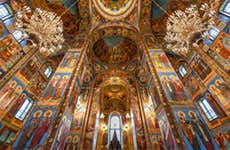
State Hermitage Museum
With an impressive collection of more than three million objects, the State Hermitage Museum in Saint Petersburg offers a fascinating journey through Russian art and history.
The origins of the Hermitage Museum
The State Hermitage Museum in Saint Petersburg, these days the second-largest art museum in the world, has its origins in a small but important collection acquired by Catherine the Great in 1764, which included pieces by artists such as Rubens, Rembrandt, Raphael or Titian.
A lover of art and entertainment, Catherine is said to have acquired more than 4,000 paintings, some 10,000 engravings, 10,000 drawings, 40,000 books and some 15,000 medals and coins during her lifetime.
As the collection grew, Catherine commissioned the construction of a building annexed to the Winter Palace in which her most precious pieces would be exhibited. This neo-classical construction quickly became too small, and the Large Hermitage was consequently built.
The museum was named after the dwelling of a hermit or recluse because it was so exclusive during its early days. It has kept its name despite being opened to the public in 1852, and nowadays the museum complex is spread across many buildings on the Palace Embankment.
Hermitage Museum Collections
Despite the best efforts of the Soviets selling over two thousand works of art from the collection during the early 1930s, the Hermitage Museum is one of the most important art galleries in the world, and throughout its extensive facilities you'll find a wide range of exhibitions from Greek and Egyptian antiquities to contemporary art.
- Painting: the Hermitage is home to an enormous collection of paintings spanning different eras and styles. Among its canvases you can see valuable pieces of great artists such as Titian, Raphael, Caravaggio, Leonardo da Vinci, Tintoretto, El Greco or Goya.
- Sculpture: with one of the most important sculptural collections in Europe, throughout the museum you'll find works by artists such as Rodin, Antonio Canova or Lorenzo Bartolini.
- Decorative arts: the most colourful area of the museum is made up of exquisite furniture, jewellery, metalwork, crockery, tapestries, costumes and more than 20,000 pieces of porcelain among many other objects.
- Arsenal: home to more than 15,000 pieces from the Middle Ages to the 20th century, Emperor Nicholas I of Russia's collection of weaponry and armour consists of firearms, swords and shields from both Russia and Western Europe.
- Oriental art: the Hermitage also has over 190,000 historic objects including coins, medals, crockery, sculptures and more from Eastern countries.
- Russian culture: more than 350,000 objects from the 10th to 20th centuries offer a faithful portrait of the country's history.
- Coins: one of the largest collections of its kind in the world, the museum has coins from numerous eras and different geographical areas.
Unmissable
The State Hermitage Museum is one of the most important museums not only in Russia, but worldwide, so this is a visit that should not be overlooked during a trip to St Petersburg.
The only downside to it being considered one of the city's must see attractions is that there are often large queues to visit it, so it is highly recommended to buy tickets in advance.
Guided tour of the Hermitage
The museum is an immense complex made up of several buildings and numerous rooms in which more than three million works and objects are exhibited. In order to not miss out on its most important points of interest, we therefore recommend booking a tour with an expert guide - which will also allow you to skip the lines to buy your ticket!
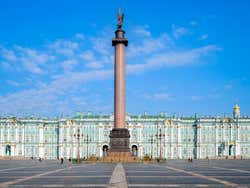
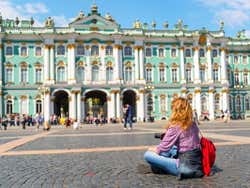
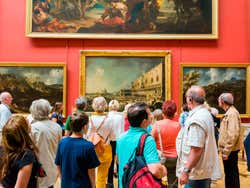
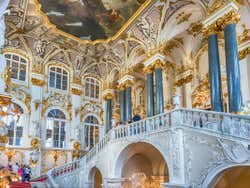
Schedule
Tuesday to Sunday: 10:30 am to 6 pm (Wednesdays and Fridays until 9 pm).
Mondays: closed.
Price
Main museum complex and all palaces: 500 RUB.
Children, students and all visitors the third Thursday of each month: free entry.
Transport
Metro: Admiralteyskaya (line 5, purple), Nevsky Prospekt (line 2, blue) and Gostiny Dvor (line 3, green).
Bus: lines 7, 10, 24 and 191.
Nearby places
Winter Palace (76 m) Palace Square (129 m) Kunstkamera (474 m) Saint Isaac's Cathedral (737 m) Church of the Saviour on Spilled Blood (800 m)
